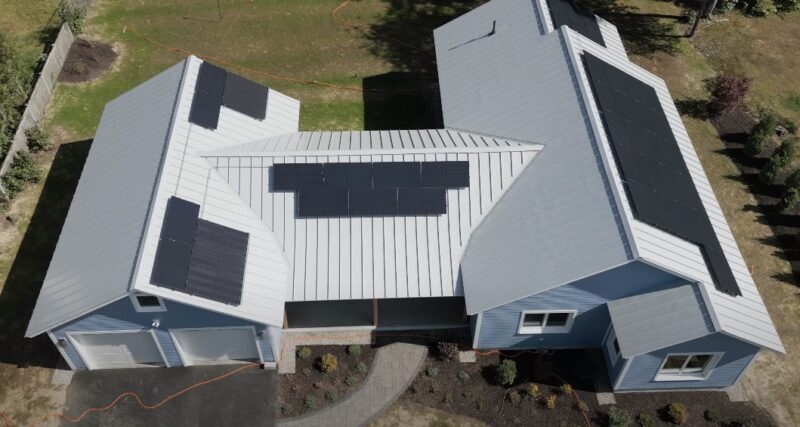Installing solar panels on your roof can significantly reduce your electricity bills while contributing to a greener planet. Renewable energy is one of the biggest trends today, which is not a surprise considering that it is the best way to reduce the carbon footprint. While there are different renewable options available, solar energy is the cleanest solution.
Overview
Switching to solar energy comes with numerous benefits. It reduces your reliance on the grid, lowers electricity bills, and decreases your carbon footprint. Additionally, many governments offer incentives and rebates for solar panel installations, making it a cost-effective solution in the long run. Solar panels are made of photovoltaic cells that convert sunlight into electricity.
These panels are installed on rooftops, capturing sunlight and generating power for your home. The efficiency of solar panels has significantly improved over the years, making them a viable option for residential use. Before proceeding with the installation, it’s crucial to evaluate your roof’s condition and understand your energy requirements. Therefore, it is crucial to explore the market and choose the right system for your needs.
Determine Your Needs
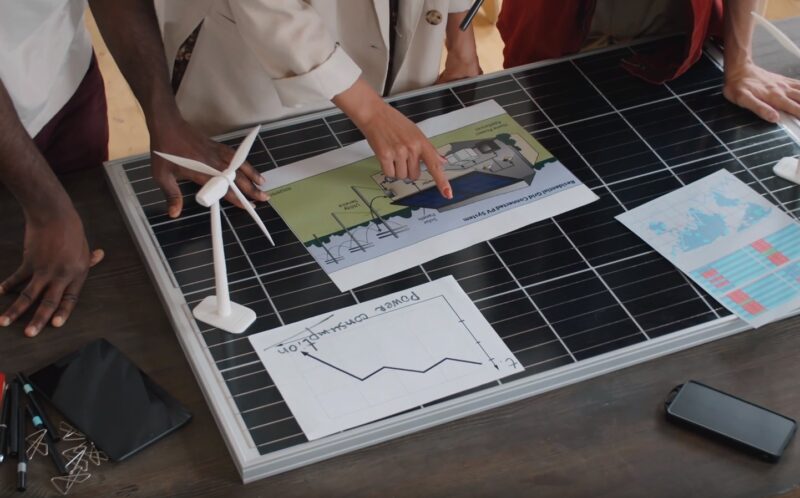
This should be the first step before you decide about making an investment. There is a wide range of panels. Some of them could be the perfect solution, while there are also those that you should avoid. In that matter, learning more about solar energy is the only way to secure a cost-efficient investment.
Roof Suitability
Not all roofs are suitable for solar panel installation. Factors such as roof size, shape, shading, and material play a crucial role. Ensure your roof is in good condition, has enough space, and receives ample sunlight. If your roof needs repairs, it’s best to address these issues beforehand.
Energy Consumption
Understanding your household’s energy consumption is vital in determining the size and number of solar panels needed. Analyze your electricity bills to gauge your average consumption and discuss your energy goals with a professional to tailor the solar system to your needs.
How to Choose the Right Panels?
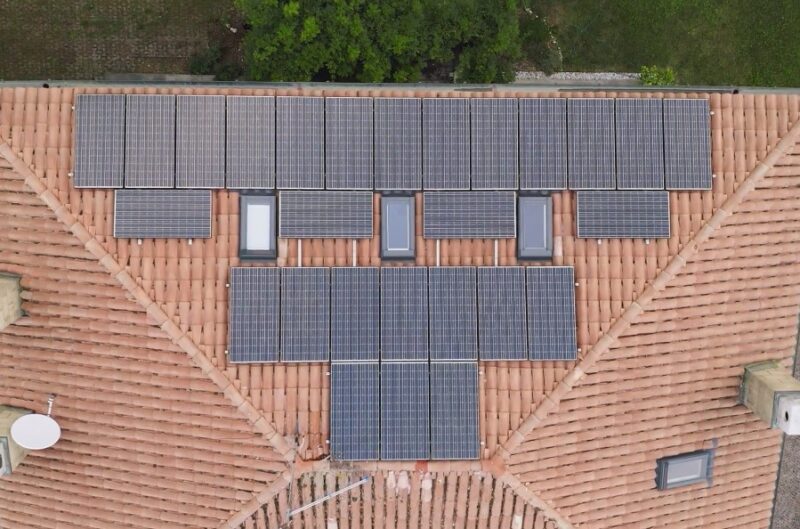
Selecting the appropriate solar panels and accompanying equipment is a critical step in the installation process.
Types of Solar Panels
There are various types of solar panels available, each with its own set of pros and cons. Monocrystalline panels are highly efficient but more expensive, while polycrystalline panels are more affordable but less efficient. Evaluate your budget and energy needs to make an informed decision. The best approach is to check out different models and compare their features. Here are some of the most popular types and their specs.
| Type of Solar Panel | Efficiency | Investment | Lifespan | Key Features |
|---|---|---|---|---|
| Monocrystalline | High (15-20%) | High | 25-35 years | Made from a single crystal structure, Takes up less space, Higher efficiency, Longer lifespan |
| Polycrystalline | Medium (13-16%) | Medium | 25-30 years | Made from multiple crystal structures, More affordable than monocrystalline, Slightly less efficient, Shorter lifespan |
| Thin-Film | Low (10-12%) | Low | 10-20 years | Made from a variety of materials, Cheapest option, Flexible and lightweight, Less efficient, Shorter lifespan |
| Amorphous Silicon | Very Low (6-8%) | Low | 10-15 years | A type of thin-film solar panel, Very flexible, Least efficient, Shortest lifespan |
| Bifacial | High (up to 27%) | High | 30+ years | Can capture sunlight from both sides, Higher efficiency potential, More expensive, Longer lifespan |
The efficiency of a solar panel is a measure of how well it can convert sunlight into usable electricity. Therefore, choosing a model with a very low efficiency rate will bring more downsides than benefits.
Lower Energy Production: A solar panel with 6% efficiency will produce less electricity from the same amount of sunlight compared to panels with higher efficiency. For example, if two solar panels (one with 6% efficiency and the other with 18% efficiency) are both exposed to 1000 watts of sunlight, the 6% efficient panel will produce 60 watts of electricity, while the 18% efficient panel will produce 180 watts.
More Space Required: Because of the lower efficiency, you would need more 6% efficient panels to generate the same amount of electricity as a smaller number of more efficient panels. This can be a significant drawback if space is limited, such as on the roof of a home.
Potentially Lower Cost: While less efficient panels might be cheaper per panel, you may end up needing more of them to meet your energy needs, which could offset the cost savings. Additionally, the cost of installation and supporting equipment (like inverters and racking) might be higher due to the larger number of panels required.
Environmental Impact: Using less efficient panels means that more space is needed to produce the same amount of energy, which could lead to greater land use and potential environmental impact.
Inverters and Mounting Systems
The inverter converts the direct current (DC) produced by the solar panels into alternating current (AC), which is used in homes. Choose a reliable inverter to ensure efficient energy conversion. Additionally, select a sturdy mounting system to secure the panels on your roof.
Installation Process
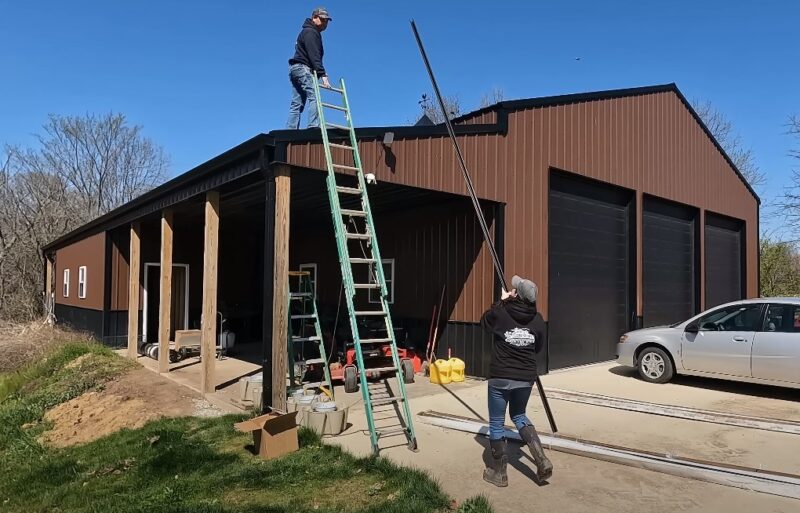
With the preliminary steps completed and equipment selected, you are now ready to proceed with the installation.
Mounting
Start by installing the mounting system, ensuring it is securely attached to your roof. Follow the manufacturer’s instructions carefully and use the appropriate tools. Once the mounting system is in place, attach the solar panels, making sure they are properly aligned and securely fastened. You should learn more about the proper cleaning as well.
Wiring and Connecting to the Grid
Connect the solar panels to the inverter, ensuring all wiring is secure and properly insulated. If you plan to connect your solar system to the grid, coordinate with your local utility company to ensure compliance with regulations and to set up net metering.
Post-Installation Steps
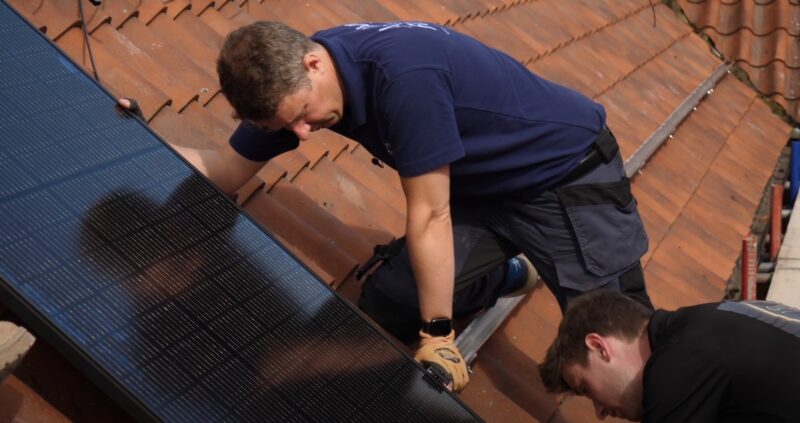
After the installation is complete, there are a few final steps to ensure everything is running smoothly.
Final Inspection and Approval
A professional inspector will need to review the installation to ensure it complies with local regulations and safety standards. Once the inspection is passed, your utility company may need to install a net meter, allowing you to earn credits for any excess energy produced.
Maintenance and Monitoring
Solar panels require minimal maintenance, but regular checks and cleaning will ensure they operate at peak efficiency. Monitor your system’s performance and keep an eye on your energy consumption to maximize the benefits of your solar panels.
How to Maximize Energy-Efficiency?
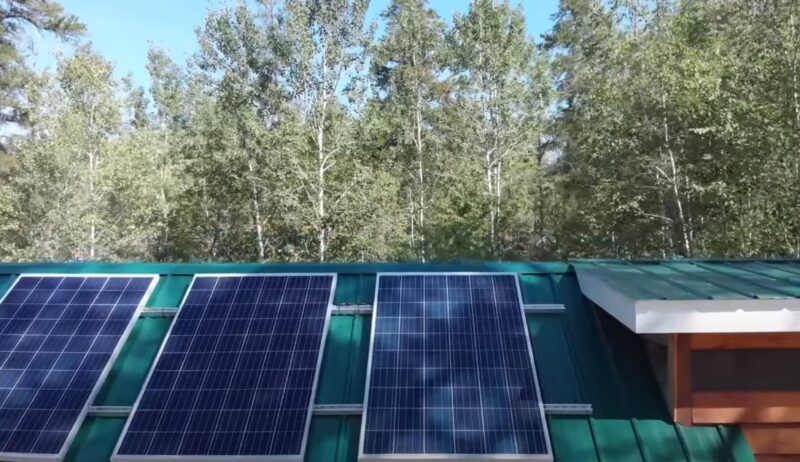
Once your solar panels are up and running, it’s essential to optimize your energy usage to get the most out of your investment.
Smart Energy Consumption
Being mindful of when and how you use energy can significantly impact your solar system’s efficiency. Try to schedule energy-intensive activities during daylight hours when your solar panels are at peak production. Utilize energy-efficient appliances and consider investing in a smart home system to automate and optimize energy usage.
Setting-Up Energy Storage
To further enhance your solar energy system, consider adding a battery storage solution. This allows you to store excess energy produced during the day for use during nighttime or cloudy days, ensuring a constant energy supply and reducing reliance on the grid.
Financial Aspects and Incentives
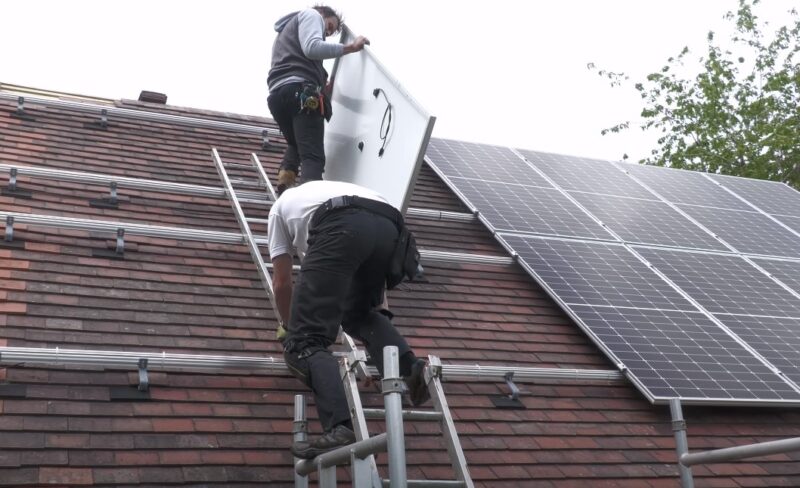
Investing in solar panels is a significant financial decision. Understanding the costs, savings, and available incentives is crucial.
Price and ROI
The initial cost of purchasing and installing solar panels can be substantial. However, it’s important to consider the long-term savings on electricity bills and the potential increase in property value. Calculate the return on investment (ROI) and payback period to make an informed decision.
Government Incentives and Rebates
Many governments worldwide offer incentives, rebates, and tax credits to encourage solar panel installations. Research the available programs in your area and take advantage of these financial incentives to reduce the overall cost of your solar energy system.
Choose a Reliable Solar Installer
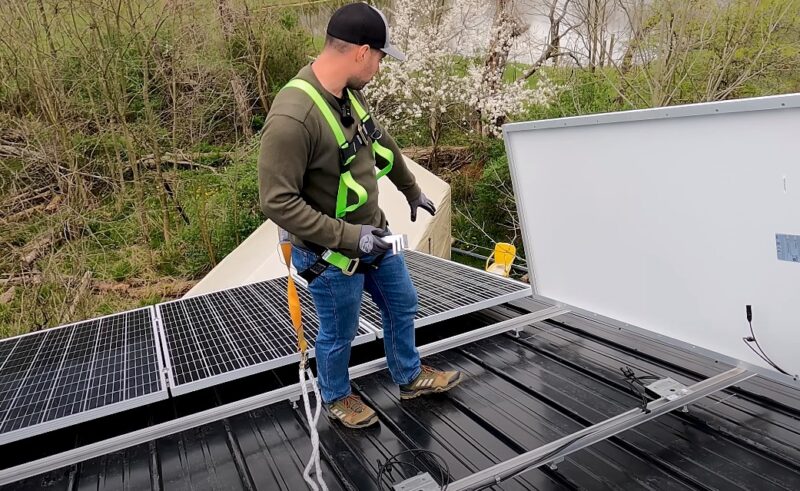
Selecting a competent and trustworthy installer is crucial for a successful solar panel installation.
Research and Compare
Take the time to research potential installers, read customer reviews, and compare quotes. Look for installers with proper certifications, extensive experience, and a good track record. Don’t hesitate to ask for references and check their previous installations.
Ask the Right Questions
When meeting with potential installers, come prepared with a list of questions. Inquire about their experience, the equipment they use, warranty offerings, and the installation timeline. Ensure they conduct a thorough site assessment and provide a detailed quote.
Proper Maintenance is Essential
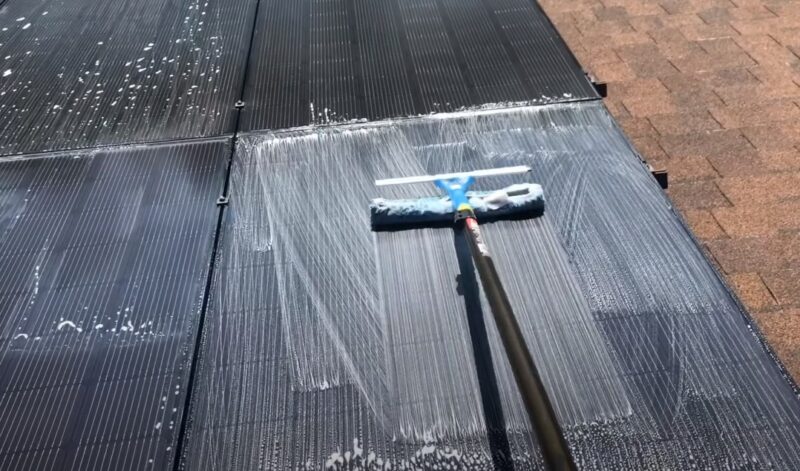
After installation, maintaining your solar panel system ensures its longevity and efficiency. This section will guide you through routine maintenance practices and troubleshooting common issues.
Regular Maintenance Checks
Solar panels require minimal maintenance, but regular checks are crucial. Inspect your panels for dirt, debris, or any obstructions that might block sunlight. Clean your panels periodically, especially after heavy storms, to ensure they operate at maximum efficiency. Additionally, monitor your energy output and take note of any significant drops in production, as this could indicate an issue.
Troubleshooting Common Issues
If you notice a decrease in your system’s performance, check for common issues such as loose wiring, dirt accumulation, or shading from new obstructions. If the problem persists, contact your installer or a solar energy professional to diagnose and fix the issue. Keep a record of all maintenance and repairs to track your system’s health over time.
FAQs
Can I use Aluminum Cable for Solar Panels?
Yes, aluminum cables can be used for solar panels. However, copper cables are generally preferred due to their higher conductivity and resistance to corrosion.
What Size Wire is Recommended for Solar?
The size of the wire depends on the system’s size and the distance between the solar panels and the inverter. It’s best to consult a professional or refer to the National Electrical Code to determine the appropriate wire size for your specific installation.
What Wiring is Required for Solar Panels?
You will need PV wire to connect the solar panels, grounding wire to ensure safety, and AC wire to connect the inverter to your home’s electrical panel. All wiring should be rated for outdoor use and properly insulated.
How Do You Find the True South?
You can find true south using a compass and adjusting for magnetic declination or by observing the sun’s position at noon. Online tools and apps are also available to help determine the true south based on your location.
Should Solar Panels Tilt or Be Flat?
Solar panels should be tilted at an optimal angle based on your geographical location to maximize efficiency. While flat panels may take up less space, they may also accumulate debris and not perform as efficiently.
Summary
Beyond the environmental impact, solar panels offer numerous personal benefits. You’ll enjoy lower electricity bills, potential increases in property value, and the satisfaction of contributing to a sustainable future. Additionally, promoting solar energy contributes to job creation in the renewable energy sector, benefiting your local community.
Stay informed about advancements in solar technology and participate in renewable energy initiatives. Advocate for policies that support renewable energy and contribute to community efforts promoting sustainability.
